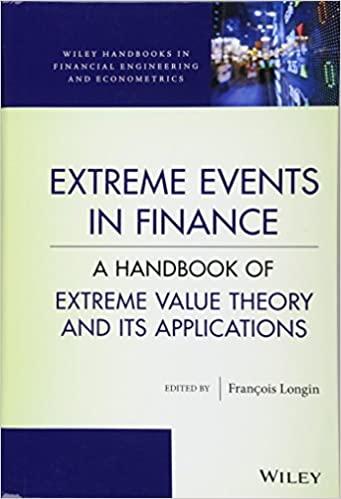Question
Flag question Question text Which of the following is FALSE? Select one: a. The cost to maturity that a firm pays on its existing bonds
Flag question
Question text
Which of the following is FALSE?
Select one:
a. The cost to maturity that a firm pays on its existing bonds equals the rate of return required by the market.
b. The cost of retained earnings is generally higher than both the cost of debt and cost of preferred stock.
c. The net proceeds used in calculation of the cost of long-term debt are funds actually received from the sale after paying for flotation costs and taxes.
d. The cost of retained earnings is always lower than the cost of a new issue of common stock due to the absence of flotation costs when financing projects with retained earnings.
The Bigelow Company has a cost of equity of 13 percent, a pre-tax cost of debt of 8 percent, and a tax rate of 35 percent. What is the firm's weighted average cost of capital if the market value of debt is $6m and equity is $1m?
Select one:
a. 10.08 percent
b. 10.24 percent
c. 9.21 percent
d. 6.58 percent
Which of the following is TRUE?
Select one:
a. In computing the cost of retained earnings, the net proceeds represents the amount of money retained net of any underpricing and/or flotation costs.
b. From a bond issuer's perspective, the IRR on a bond's cash flows is its yield to maturity (YTM); from the investor's perspective, the IRR on a bond's cash flows is the cost to maturity.
c. If you purchased the same percentage of each type of security that a firm issued, the expected return on that portfolio of securities would equal the firm's weighted average cost of capital.
d. Holding risk constant, the implementation of projects with a rate of return above the cost of capital will decrease the value of a firm, and vice versa.
The cost of common stock equity may be estimated by using the ________.
Select one:
a. DuPont analysis
b. Gordon model
c. break-even analysis
d. yield curve
Generally the least expensive source of long-term capital is ________.
Select one:
a. preferred stock
b. long-term debt
c. common stock
d. retained earnings
Step by Step Solution
There are 3 Steps involved in it
Step: 1

Get Instant Access to Expert-Tailored Solutions
See step-by-step solutions with expert insights and AI powered tools for academic success
Step: 2

Step: 3

Ace Your Homework with AI
Get the answers you need in no time with our AI-driven, step-by-step assistance
Get Started


